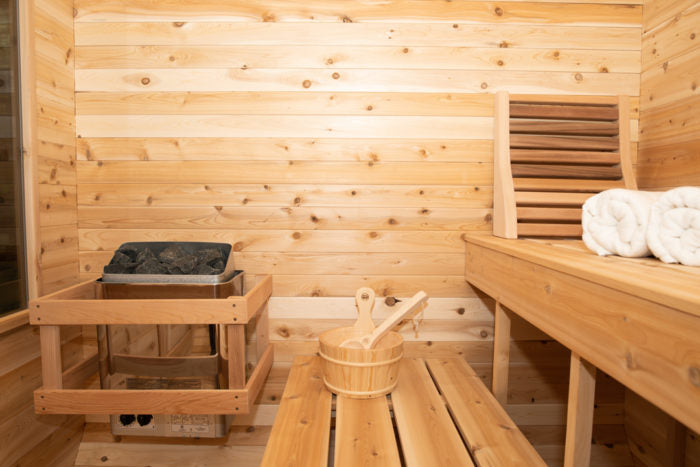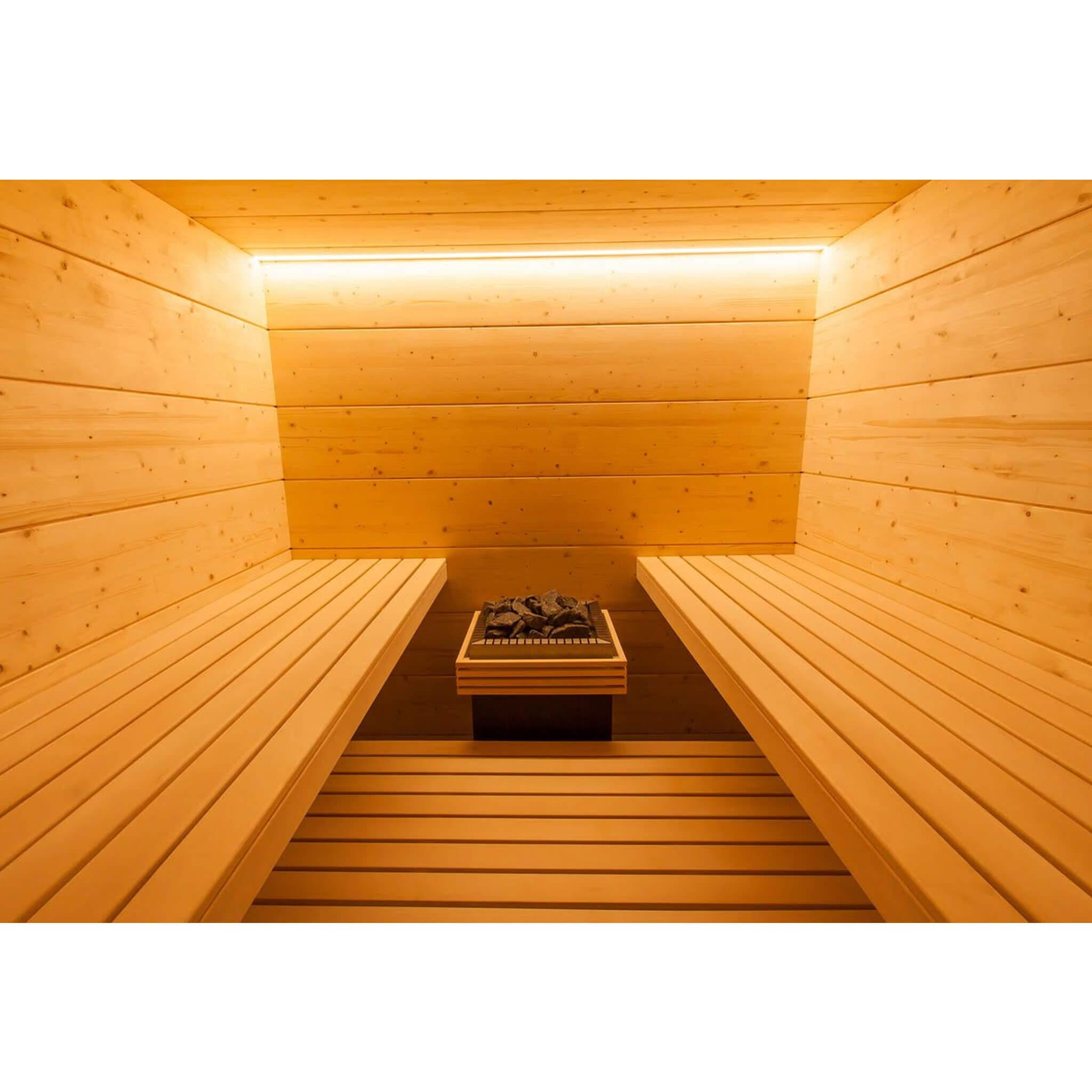7 Easy Facts About Traditional Sauna Explained
7 Easy Facts About Traditional Sauna Explained
Blog Article
Traditional Sauna Fundamentals Explained
Table of ContentsAll about Traditional SaunaSome Known Facts About Traditional Sauna.Traditional Sauna Fundamentals ExplainedEverything about Traditional SaunaAn Unbiased View of Traditional Sauna
Many of the weight lost in a sauna is water loss and is re-gained upon rehydrating. Nevertheless, without an uncertainty sauna can be an important component of a healthy and balanced weight-loss program. To look at the differences in between traditional and IR saunas, I will certainly divide these into verifiable, academic, and made distinctions.Thus, the best point in the saunawhich is at the ceiling straight over the sauna heateris generally in between 185 and 190 F. Claims that a standard sauna exceeds 200 F is just not real and not applicable for electric saunas sold in the US. The temperature for a far-infrared sauna is generally set between 120 and 140 F; nonetheless, unlike the typical sauna, the objective in and IR room is not to accomplish a heat.
As a result of this, the temperature level difference is almost unnecessary, because extreme sweating leads to both sauna types, yet the method of heating up the body is various. In an IR sauna the bather will certainly feel warm and will sweat a lot, but at a lot reduced temperatures (Traditional Sauna). Therefore, if the goal is to invest longer time periods in the sauna, the IR sauna is an excellent selection
When a traditional sauna has actually been properly heated up, the sauna wall surfaces are warm, the air temperature has actually attained set temperature level and the rocks are super heated. As an intriguing side note, the warmed wall surfaces and the rocks are releasing far-infrared heat, integrated with the warmed air, to develop an "enveloping heat".
The Definitive Guide for Traditional Sauna

When the high temperature is accomplished, the elements cycle on and off to maintain the heat. Many standard sauna individuals delight in pouring water over the rocks to produce steam to elevate sauna moisture levels. The advantages of putting water over the rocks include: making the area extra comfy, dampening the nasal flows, and permitting the use of aromatherapy by mixing important oils with the water.

When the energy gets in the body, it triggers the body temperature level to enhance and eventually results in perspiration. In an infrared sauna it is very important for the emitters/heaters to remain on virtually regularly. Considering that there is no mass of rocks to maintain warmth, the sauna will cool down if the emitters shut down.
As pointed out above, the sauna bather in an infrared area intends to position himself before operating emitters to get optimal benefit from the warmth. The heating time for the 2 rooms can be extremely various, depending on exactly how the areas are utilized. For a conventional sauna, a bather needs to permit 30-40 minutes for the space to achieve a wanted temperature level and to effectively pre-heat the rocks.
5 Easy Facts About Traditional Sauna Explained
A well created sauna will typically accomplish a temperature level of 150-160 F in regarding 30-40 minutes. For hotter temperatures, the space may need to warm for a longer period.

Conventional saunas often tend to be bigger (hence make use of more electricity) than infrared saunas, although traditional saunas are definitely available in one and 2 person sizes too. For a two-person conventional sauna, 5x6 or 5x7 dimension is most popular. The leading bench can conveniently seat 2 or 3 people and is additionally enough time to relax during the sauna session.
Unknown Facts About Traditional Sauna
The average expense per kWH of power in the united state is approximately $0.11, so a 4.5 kW heater will cost roughly $.50 to you can look here run for one hour, if the heating unit runs constantly for one hour. Generally a sauna heating unit will run for 75% of the first hour and 50% of succeeding hours on given that the aspects cycle once the set temperature is accomplished.

There is a seldom talked about difference in the social experience in between the 2 rooms. While our society has lost some of the social advantage of the standard sauna experience, it can be very socially gratifying (Traditional Sauna). From family members time in the sauna, to heart-felt discussions with substantial others, to sauna partiesthe conventional sauna experience can lead to intimate mingling
Things about Traditional Sauna
The majority of higher end infrared rooms include tinted light treatment, sound systems and full-glass fronts.
Report this page